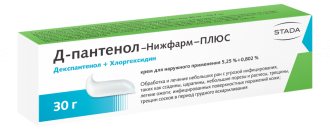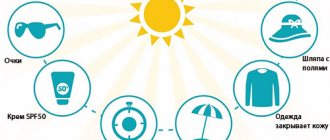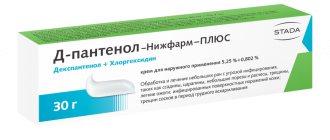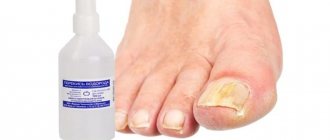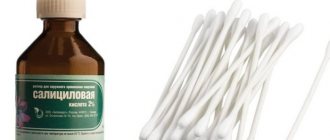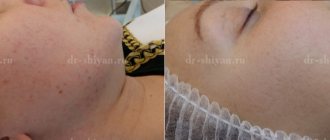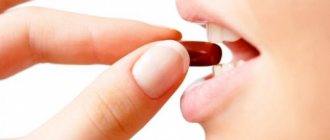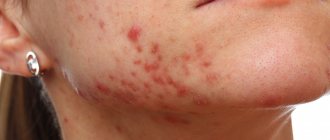When are systemic retinoids prescribed for acne?
Retinoids are a chemically related class of compounds to retinol and are prescribed for various forms of acne. Treatment of acne with systemic retinoids is justified in such cases9,44:
- Severe forms of acne (nodules, conglobate acne, acne formations with a high risk of scar formation).
- Acne that does not respond to other types of therapy.
- The presence of pronounced psycho-emotional disorders against the background of the development of acne.
- Tendency to resolve acne with scarring.
- Large affected areas of the back, face, and torso.
- Frequent relapses of the disease.
When prescribing complex therapy using systemic and topical retinoids, a specialist should discuss daily care with him. Using peelings, degreasing agents, visiting a solarium - all this enhances the effect of retinoids. Treatment usually lasts about six months. The specialist should explain that you should not plan a pregnancy during this period, since drugs with retinol have a teratogenic effect, that is, they can affect the fetus. Also, you should not visit a cosmetologist at this time, since many procedures are incompatible with taking retinoids.29
Retinoids (in-depth review)
Acnecutane, Roaccutane, Erase
Acnecutane, Roaccutane, Erase
Systemic retinoids contain the active ingredient isotretinoin. This substance has been used in world medicine for almost 40 years and is the gold standard for the treatment of acne and acne.
What kind of substance is this? This is trans-retinoic acid and it very powerfully suppresses the activity of the sebaceous glands.
When does acne occur?
Acne occurs when, under the influence of excessive effects of the hormone testosterone on the sebaceous gland, powerful production of sebum in large quantities is stimulated.
How do systemic retinoids work?
Systemic retinoids act on the sebaceous gland receptors, joining the sebaceous gland receptors, they inhibit the activity of sebum secretion from the gland and acne goes away.
The most frequently prescribed drugs from systemic retinoids (approved in the Russian Federation):
- Roaccutane
- Aknekutan
- Will erase
Comment from cosmetologist, dermatologist Yuliana Shiyan:
When I prescribe one of these drugs, I am asked why this particular drug and what is the difference between retinoids? All these drugs have one substance in common: Isotretinoin. Roaccutane was the very first to appear. This is the original drug, and all other drugs are its *generics. All generics of isotretinoin have their own registration certificates and are approved in Russia.
*GENERIC - approved copy of the original drug
Roaccutane and Sotret practically do not differ from each other either in formula or dose. When assigning them, there is no difference and the choice in favor of one or the other is immaterial. Acnecutane contains the same substance, but its formula is slightly different from Roaccutane and Sotret.
Why is Acnecutane more interesting for a cosmetologist and the patient himself, as a choice for treatment and how to understand which retinoid drug is better?
Isotretinoin is a fat-soluble substance. It is absorbed by the body only in combination with absorbed fats. If you take Roaccutane and wash it down with plain water, you will absorb less than 40% of it. If you take Acnecutan and drink it with plain water, it will be absorbed by the body by about 70%.
When prescribing Acnecutane, the doctor insures patients against their own mistakes. Patients may neglect fatty foods while taking Roaccutane and Sotret, forget to eat anything fatty or fatty foods are forbidden to them (on a diet), and the required dose of the drug must enter the body! Necessary, not a small part of it! Therefore, the drug Acnekutan is more preferable for the patient; a lack of fat when taking it is less likely to affect the outcome of treatment.
Its daily dose is regulated by the doctor, but there is also a cumulative dosage of the drug that the patient’s body must accumulate. It is when it is achieved that we can talk about a high chance of stable remission in the patient.
Due to the fact that Acnecutane is better absorbed, the manufacturer made slightly less active ingredient in one dose, which means: The working dose is 20 mg. Roaccutane corresponds to the working dose of Acnecutane with 16 milligrams of Isotretinoin.
The conclusion is simple: if less isotretinoin accumulates in the body, then the risks of side effects are also reduced. This is very good for the patient!
For ardent supporters of all original and original drugs, Roaccutane is recommended. But all other retinoids will be useful for you, provided that they are prescribed by a dermatologist, and you, in turn, comply with all the conditions for taking retinoids.
The effect of acne treatment with systemic retinoids
The use of systemic retinoids has the following effects44:
- restore terminal differentiation of keratinocytes, due to which redox processes and regeneration are normalized;
- stop the hyperproliferation of the epithelium of the sebaceous gland canals, the formation of detritus and promote its removal, due to this the production of sebum is reduced, the removal of sebum is facilitated, its composition returns to normal, the inflammation around the gland is reduced;
- have an anti-inflammatory, immunomodulatory effect, inhibiting inflammatory mediators.
A decrease in sebum secretion is observed after 2-3 weeks, which also leads to a reduction in the colonization of propionibacteria and their ability to synthesize pro-inflammatory mediators44.
How to use retinol
- the doctor, in order to reduce the acute reaction of the skin to retinol, additionally prescribes antioxidants with anti-inflammatory effects;
- During the course of retinol therapy, it is recommended to change lenses (if you wear them) to glasses, since the drug causes dry skin, which can cause discomfort when wearing lenses;
- The cream is best applied in the evening, since retinol increases skin sensitivity in sunlight;
- retinol therapy is prescribed in small doses, which are gradually increased;
- the product must be applied in a thin layer, and a positive result should be expected after several months;
- Retinol should not be added to other creams, as this can cause unpredictable results.
Side effects from treatment with systemic retinoids
Therapy with systemic retinoids should only be carried out under the supervision of a specialist. While taking these medications, you need to take a biochemical blood test once a month: check the level of liver enzymes (ALT, cholesterol, alkaline phosphatase, AST, triglycerides). If these indicators increase, the specialist may reduce the dose of the medicine. If there is an increase in triglycerides and there are complaints about the functioning of the liver and gastrointestinal tract, it is necessary to additionally check the levels of lipase and amylase in order to detect pancreatitis in time44.
When treating acne* with retinoids, you should stop drinking alcohol and use sunscreen. The drug should not be combined with tetracycline, since both drugs can increase intracranial pressure44.
Retinoids may cause the following side effects44:
- cheilitis;
- dry skin;
- conjunctivitis,
- dry mucous membranes;
- increased photosensitivity;
- deterioration of night vision;
- headache;
- myalgia, arthralgia;
- transient hair loss.
The most common situation that worries patients at the beginning of treatment with systemic retinoids is the so-called retinoic dermatitis. It develops approximately when a certain cumulative dose of the drug is reached in the blood. This reaction is considered normal. Irritation and redness of the skin appear, especially in places where it is thin. Itching and sensitivity may be felt.29
Side effects stop after you stop taking the drugs. In the first 30-60 days, symptoms may worsen. It is highly not recommended to reduce the dosage on your own or stop taking medications; you should contact a specialist who, if necessary, will adjust the course of therapy44.
The mechanism of absorption of retinol and tretinoin by skin cells
Skin cells contain receptors that interact with retinoic acid. Activation of receptors leads to the development of a signal for the cell nucleus to begin the synthesis of certain organic substances.
The chain of chemical reactions is as follows: retinol, interacting with alcohol dehydrogenase enzymes, changes and turns into retinoaldehyde. At the next stage, this substance becomes retinoic acid - an intercellular communicator. Retinoic acid can also be formed from esters of retinyl palmitate and retinyl acetate, which, interacting with the enzyme esterase, are converted first into vitamin A (retinol), and then, along the chain described above, into retinoic acid.
How to take vitamin A tablets: recommendations and dosages
The dosage of the drug is selected individually according to the age, gender and health status of the patient. Retinol tablets are used strictly according to the instructions, since an overdose can lead to unpleasant consequences. The norm of vitamin A in accordance with age characteristics will be distributed as follows:
| Age | Drug dosage, mg |
| From 4 to 8 years | 0,9 |
| From 9 to 13 years | 1,7 |
| From 14 to 18 years old | 2,8 |
| From 19 years old | 3 |
To obtain an effective result, it is recommended to use vitamin A in tablets while eating fatty foods. The drug is drunk after meals. Most often, the course of treatment lasts 30 days. It must be repeated after 2 months.
Sources
- Boyarovich H., Swimmer A: Effect of vitamin A on skin condition, 2010;
- Bronikowska A, Wojnowska D: Use of retinoids in dermatology, 2003;
- Mortazavi H, Agazadeh N, Ghiasi M: Review of three systemic retinoids in dermatology: acitretin, isotretinoin and bexarotene, 2013;
- Colley S.S., Pecone D., Pona A., Kline A., Feldman S.R. Topical retinoids for acne vulgaris: a systematic review, 2019;
- Ludot M, Mouchabac S, Ferreri F: Relationship between isotretinoin treatment and mental disorders: depression, bipolar disorder, anxiety, psychosis and suicide risks, 2015;
- Binkley N, Kruger D. Hypervitaminosis A and bones, 2000;
- Rebul E: Uptake of Vitamin A and Carotenoids by Enterocytes: Focus on Transport Proteins, 2013;
- Burda-Malarz K. Safety of pharmacotherapy with retinoids in dermatology, 2015;
- Allen LH, Haskell M: Assessing the potential for vitamin A toxicity in women and young children, 2002;
- Khalil S, Bardawil T, Stephan S, et al: Retinoids: the path from molecular structures and mechanisms of action to clinical use in dermatology and side effects, 2017;
- Madke B., Shah H., Singh A.L. et al.: Cheilitis caused by oral retinoids, 2016;
- Mohsen Elewa R, Zouboulis CC: Vitamin A and skin, 2018;
- Kontaxakis VP, Skourides D, Ferentinos P et al.: Isotretinoin and psychopathology: a review, 2009;
- Huang YC, Cheng YC: Isotretinoin treatment of acne and risk of depression: a systematic review and meta-analysis, 2022.
Sources[ | ]
| Vegetables (carotene) | Animals | Synthesis in the body |
| Green and yellow vegetables (carrots, pumpkin, bell peppers, spinach, broccoli, green onions, parsley), legumes (soybeans, peas), peaches, apricots, apples, grapes, watermelon, melon, rose hips, sea buckthorn, cherries; herbs (alfalfa, borage leaves, burdock root, cayenne pepper, fennel, hops, horsetail, kelp, lemongrass, mullein, nettle, oats, parsley, peppermint, plantain, raspberry leaves, clover, rose hips, sage, bearberry, violet leaves , sorrel). | Fish oil, liver (especially beef), caviar, milk, butter, sour cream, cottage cheese, cheese, egg yolk | Formed as a result of the oxidative breakdown of β-carotene |
The best sources of vitamin A are fish oil and liver, followed by butter, egg yolk, cream and whole milk. Cereal products and skim milk, even with vitamin supplements, are unsatisfactory sources, as is beef, which contains negligible amounts of vitamin A.
Use of retinoids in women of childbearing age
The main undesirable effect of this group of drugs is teratogenicity (harmful effect on the fetus. Retinoids should absolutely not be used by pregnant women, therefore, before therapy with vitamin A derivatives, reliable and long-term contraception should be prescribed.
The length of the withdrawal period depends on the type of retinoid used:
- Acitretin. Contraception begins 4 weeks before the start of pharmacotherapy and ends 3 years after its completion.
- Isotretinoin. Contraception is prescribed a month before treatment and lasts another 1-2 months after the end of pharmacotherapy.
In pregnant women, especially in the first trimester, the use of vitamin A derivatives leads to serious damage to the fetus:
- craniofacial defects (hydrocephalus, microcephaly);
- microphthalmia (small eyes);
- defects of the outer ear;
- cardiovascular system defects;
- defects of the central nervous system.
Human embryos are more sensitive than other species due to the slow elimination of retinoids from the body.
Contraindications for use
- you can’t stay in the sun for a long time;
- Pregnant and lactating women should not use the drug;
- taking medications simultaneously with retinol that increase sensitivity to sunlight;
- simultaneous use of retinol and salicylic glycolic acids is unacceptable;
- It is not recommended to take retinoids together with plant estrogen and immunomodulatory drugs.
Retinol preparations have firmly integrated into modern cosmetology and there is every reason to assume that retinol cosmetics will soon occupy their niche in medicine. Today in pharmacies you can buy creams, gels and skin scrubs containing retinoids.
Daily requirement[ | ]
The recommended daily dose of vitamin A is:
- 900 mcg (3000) for adults (for pregnant women 100 mcg more, for nursing mothers - 400 mcg more);
- 400-1000 mcg for children, depending on age and gender;
- For diseases associated with retinol deficiency, the dosage can be increased to the upper permissible intake level - 3000 mcg.
The above dosages refer exclusively to the retinoid form of vitamin A. The carotenoid form is not as toxic.[3]
Table of daily intake of retinol (vitamin A)[ | ]
| Floor | Age | Retinol (vitamin A) intake rates, mcg/day |
| Babies | up to 6 months | 400 |
| Babies | 7-12 months | 500 |
| Children | 1-3 years | 300 |
| Children | 4-8 years | 400 |
| Children | 9-13 years | 600 |
| Men | 14 years and older | 900 |
| Women | 14 years and older | 700 |

